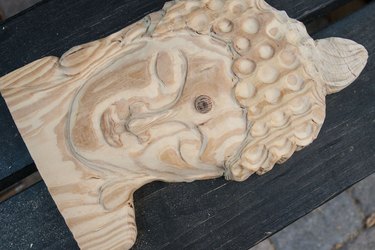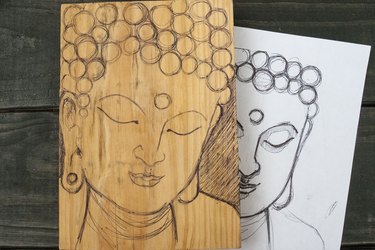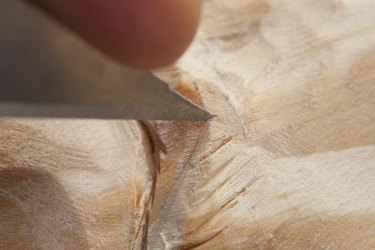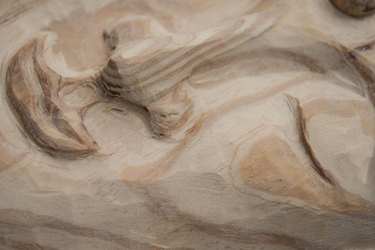Things You'll Need
Pencil and paper
Block of wood
V-gouges
U-gouges
Bench knife or pen knife
Wood stain
Lacquer

Carving faces from wood is an enjoyable pastime for carvers of all experience and skill levels. Beginners can acquire the necessary skills required to fashion a face from a block of wood with a little patience and a lot of practice. The art and craft of carving masks and three-dimensional faces out of wood is a time-honored tradition in the United States and around the world. Some notable examples include Iroquois False Face Society carvings and the semi-abstract masks made by African tribal woodcarvers.
Step 1

Draw your face design with pencil and paper before you start to carve. Choose a wood blank of butternut, basswood or other type of soft wood. Draw the face onto the flat plane of the wood block. Use a v-gouge carving tool for your initial wedge-shaped cuts to establish the planes of the face. Cut a wedge at the half-way point of the blank for the bridge of the nose. Carve another wedge three-quarters of the way down for the bottom of the nose. Just below it, carve a wedge for the mouth and chin.
Video of the Day
Step 2

Use a large u-gouge to cut away excess areas of wood around the nose. Carve the flat forehead plane so it slopes back into the wood. Taper the cheek areas back into the plane of the eyes. Carve parallel to the wood grain to avoid chipping the wood. Make two cuts from opposite directions to smooth any jagged edges when carving across or against the wood grain. Keep carving with your larger tools until you define the basic planes of the face.
Step 3

Begin to carve the finer details of the facial features with a bench knife, also called a detail knife or straight knife. Pen knives also work well. Draw in the face's details with a pencil as you work to guide your carving. Carve the brow lines and cheek lines so they curve inward. Sculpt ball shapes for the eyes, then cut the eyelids. Cut gentle curves for the upper eye lids. Form the bridge of the nose so it tapers at the top.
Step 4

Use a small u-gouge to cut the eye's pupils. Add details such as skin wrinkles, eyebrow and facial hair using your bench knife or a small v-gouge. As you carve, remember the eyes are the most deeply recessed points and the tip of the nose is the highest point. Work on the nostril and mouth details until they're well defined. Carve the indention below the lips and the cheek dimples.
Step 5

Use your smallest gouges and the bench knife to carve the finest details and accents of the face. Create furrows on the forehead and add crows feet around the corners of the eyes. Carefully v-gouge the hair details until they appear to flow naturally. View the face from all angles to make sure the chin, cheekbones and nose taper correctly. Stop carving when the face has a character and personality of its own. Finish the face with wood stain or lacquer, or leave it natural if you prefer.
Tip
Soften the wood with denatured alcohol for easier carving. Keep your carving tools sharp for clean cuts.
Warning
Always cut away from your hands to prevent injuries.
Video of the Day